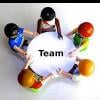Related Content
 |
The Sound of Expertise At the beginning of our careers, we know a little bit of theory and have a little bit of practice but worry that the “adults” around us are going to embarrass us when they realize we don’t know everything about everything. |
|
 |
It’s Not All Engineering IT managers often begin their careers as engineers, problem solvers, and innovators. If you are a technical person who aspires to a management role you must learn to embrace and work with budget and priority constraints. |
|
 |
10 Tips for Better Writing Many people resist writing and are out of practice, but small improvements can make a big difference. If you would rather go to the dentist than write a one-page report, these tips are for you. |
|
 |
Human Resource Management, Multi-Tasking, and Waves Some tolerate multi-tasking better than others. Beyond tolerance and even the ability of some people to switch contexts more efficiently than others is an effect of multi-tasking that most of us have experienced but rarely discuss. |
|
 |
Getting the Most from a Virtual Event Virtual events do have value, but in order to get that value, you need to treat them with the same reverence you would a physical event. Here are a few suggestions on how to do that. |
|
 |
The New Need for the Act of Balancing Prioritization is a skill that helps determine when and where to balance, both professionally and personally. Balancing is important when we prioritize our choices. In fact, these two attributes are so closely tied that it is important to balance our priorities and prioritize our balance. |
|
 |
How to Run a Productive and Effective Remote Team With remote work becoming the norm, now is a good time to consider how you can help your team do their best without causing burnout. Fortunately, remote work may actually improve productivity. After all, it's one of the factors that largely contribute to job satisfaction. |
|
 |
Code Integration: When Moving Slowly Actually Has More Risk Many decisions about code branching models are made in the name of managing risk, and teams sometimes pick models that make integration harder in the name of safety. Moving slowly and placing barriers to change can seem safer, but agile teams work best when they acknowledge that there is also risk in deferring change. |





